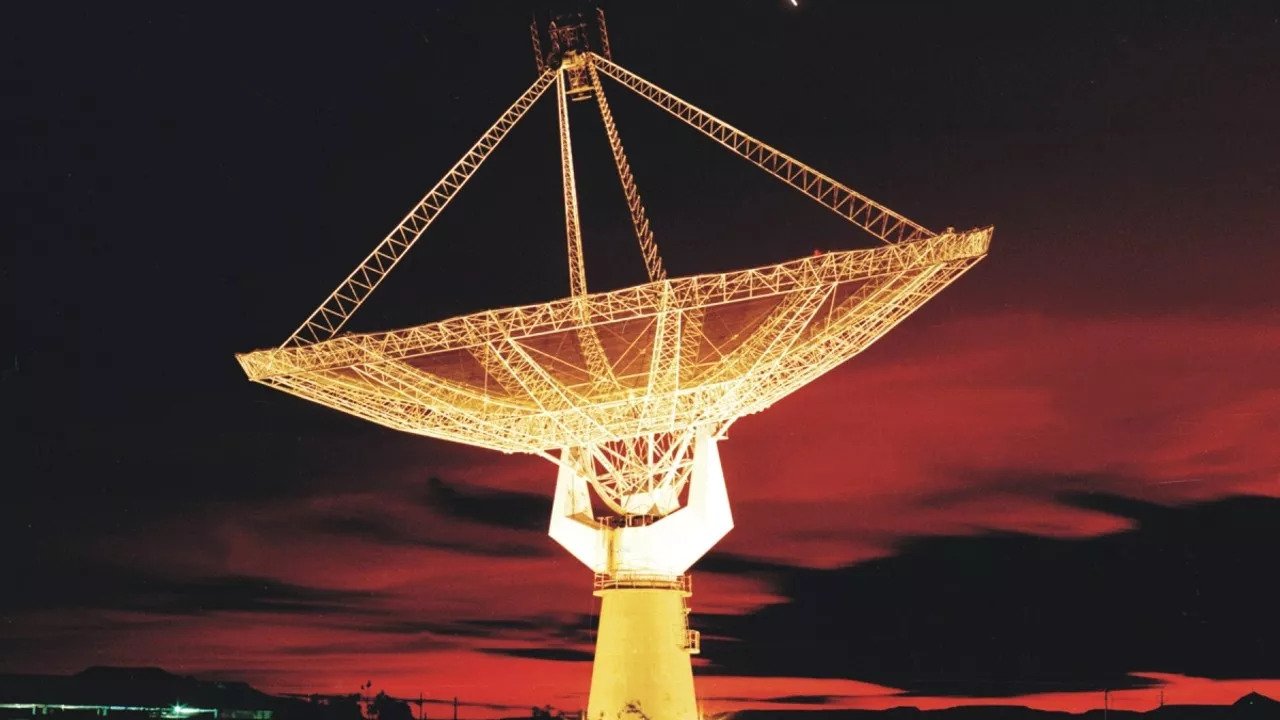Radio signal from 8 billion light-years away could reveal the secrets of the universe's 'dark age'
Astronomers detected a radio signal from deeper in space than ever before, using a cosmic trick first predicted by Einstein.

By using warped space-time as a magnifying glass, astronomers have picked up the most distant signal of its kind from a remote galaxy, and it could blow open a window into how our universe formed.
The record-breaking radio frequency signal, picked up by the Giant Metrewave Radio Telescope (GMRT) in India, came from the galaxy SDSSJ0826+5630, located 8.8 billion light-years from Earth, meaning the signal was emitted when the universe was roughly a third of its current age.
The signal is an emission line from the universe's most primordial element: neutral hydrogen. In the aftermath of the Big Bang, this element existed throughout the cosmos as a turbulent fog from which the first stars and galaxies eventually formed. Astronomers have long searched for distant signals from neutral hydrogen in the hope of finding the moment the first stars began to shine. However, given the extraordinary distances involved, those signals have proven difficult to spot.
Now, a new study, published Dec. 23 in the journal Monthly Notices of the Royal Astronomical Society, shows that an effect called gravitational lensing could help astronomers spot evidence of neutral hydrogen.
Related: Strange 'heartbeat' signal spotted coming from deep space
"A galaxy emits different kinds of radio signals," study lead author Arnab Chakraborty, a cosmologist at McGill University in Canada, said in a statement. "Until now, it's only been possible to capture this particular signal from a galaxy nearby, limiting our knowledge to those galaxies closer to Earth."
The 'dark age' of the universe
Forged roughly 400,000 years after the beginning of the universe when protons and electrons first bonded to neutrons, neutral hydrogen populated the dim early cosmos throughout its so-called dark age — an epoch before the first stars and galaxies came into existence.
When stars do eventually form, they blast out fierce ultraviolet light that strips the electrons from much of the hydrogen atoms in the space surrounding them, thus ionizing the atoms so they're no longer neutral. Eventually, young stars lose their ultraviolet intensity, and some of the ionized atoms recombine into neutral hydrogen. Detecting and studying neutral hydrogen can provide an insight into the lives of the earliest stars, as well as the time before stars existed.
Get the world’s most fascinating discoveries delivered straight to your inbox.
Neutral hydrogen emits light at a characteristic wavelength of 21 centimeters. But using neutral-hydrogen signals to study the early universe is a tough task, as the long-wavelength, low-intensity waves often get drowned out across vast cosmic distances. Until now, the farthest 21 cm hydrogen signal detected was 4.4 billion light-years away.
Gravitational lensing peers into the past
To find a signal at double the previous distance, the researchers turned to an effect called gravitational lensing.
In his theory of general relativity, Albert Einstein explained that gravity isn't produced by an unseen force but rather is our experience of space-time curving and distorting in the presence of matter and energy. Gravitational lensing occurs when a massive object sits between our telescopes and its source. In this case, the space-warping object was the gigantic star-forming galaxy SDSSJ0826+5630, which used its powerful warping effect to act as a lens that steered a faint and distant neutral hydrogen signal into focus for the GMRT.
"In this specific case, the signal is bent by the presence of another massive body, another galaxy, between the target and the observer," study co-author Nirupam Roy, an associate professor of physics at the Indian Institute of Science, said in the statement. "This effectively results in the magnification of the signal by a factor of 30, allowing the telescope to pick it up."
Now that the researchers have found a way of probing previously unreachable hydrogen clouds, they want to use it to improve the charting of the universe throughout its various cosmological ages and, hopefully, pinpoint the moment the first stars began to shine.

Ben Turner is a U.K. based writer and editor at Live Science. He covers physics and astronomy, tech and climate change. He graduated from University College London with a degree in particle physics before training as a journalist. When he's not writing, Ben enjoys reading literature, playing the guitar and embarrassing himself with chess.


